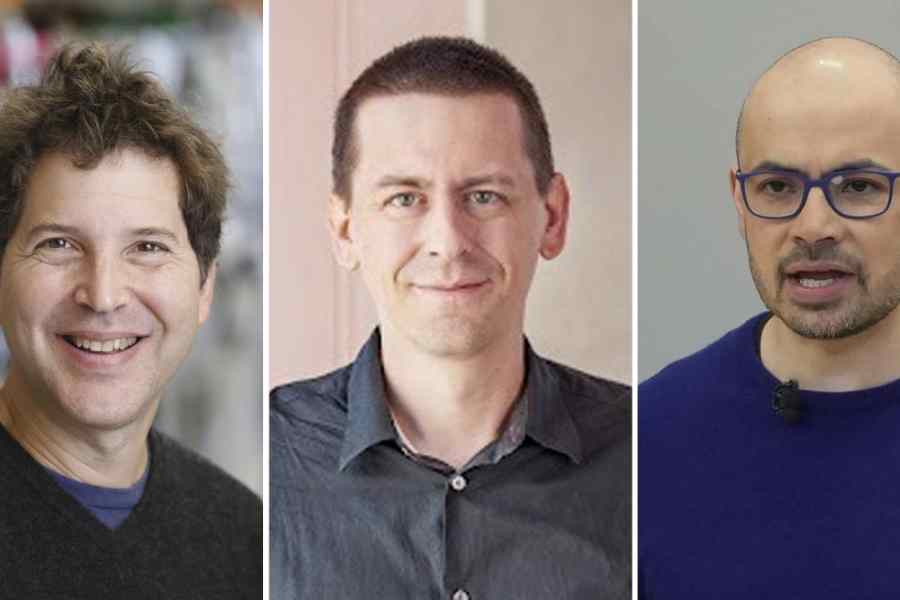The Nobel Prize in Chemistry was awarded on Wednesday to David Baker at the University of Washington “for computational protein design” and to Demis Hassabis and John Jumper of Google DeepMind “for protein structure prediction”.
The impact of the work of this year’s laureates is “truly huge”, Johan Aqvist, a member of the Nobel Committee for Chemistry, said on Wednesday. “In order to understand how proteins work, you need to know what they look like, and that’s what this year’s laureates have done.”
Dr Hassabis and Dr Jumper, the committee said, have used their AI model AlphaFold2 to calculate the structure of all human proteins. The researchers “also predicted the structure of virtually all the 200 million proteins that researchers have so far discovered when mapping Earth’s organisms,” the committee said.
Hassabis and Jumper were part of a team at Google DeepMind, the company’s central AI lab, that developed a technology called AlphaFold. It can rapidly and reliably predict the physical shape of proteins and enzymes — the microscopic mechanisms that drive the behavior of viruses, bacteria, the human body and all other living things.
Biochemists have used the technology to speed the discovery of medicines, and it could also lead to new biological tools such as enzymes that efficiently break down plastic bottles and convert them into materials that are easily reused and recycled.
Proteins begin as strings of chemical compounds, before twisting and folding into three-dimensional shapes that define what they can and cannot do. Before the arrival of AlphaFold, scientists would spend months or even decades trying to pinpoint the precise shape of individual proteins.
AlphaFold could do the job in a few hours.
When the Google team unveiled the technology in 2020, many scientists had assumed that such as a breakthrough was still years away. Scientists had struggled for more than 50 years to solve what was called “the protein folding problem.”
Baker “opened up a completely new world of protein structures that we had never seen before,” Aqvist said.
In 2003, the committee pointed out, Baker “succeeded in designing a new protein that was unlike any other protein,” which it said was “something that can only be described as an extraordinary development”.
His research group, the committee said, “has produced one imaginative protein creation after another, including proteins that can be used as pharmaceuticals, vaccines, nanomaterials and tiny sensors”. The impact of the laureates’ work was huge, Aqvist said. “In order to understand how proteins work, you need to know what they look like and that’s what this year’s laureates have done,” he said.
Hassabis was born in London, where his parents — one a Greek Cypriot, the other a Singaporean — ran a toy store. As a teenager, he was the second-highest ranked under-14 chess player in the world and began designing video games professionally before attending college.
New York Times News Service











